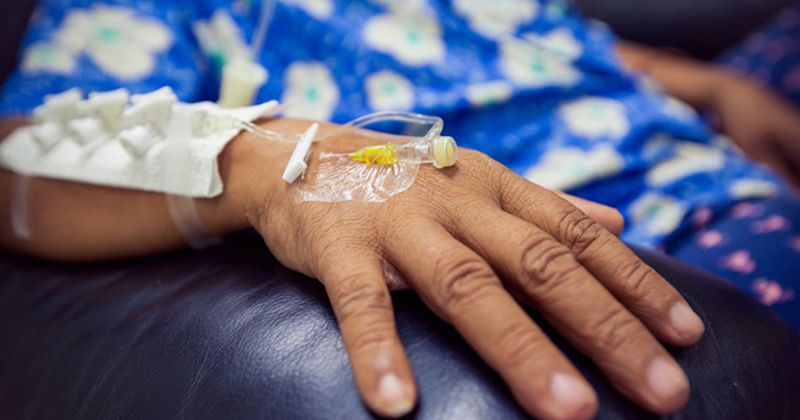Dermatomyositis, older age increase cancer risk in idiopathic inflammatory myopathies
Dermatomyositis, older age and anti-transcriptional intermediary factor-1 gamma positivity are associated with a significantly increased risk for cancer in patients with idiopathic inflammatory myopathies, according to a meta-analysis.
“Around one in four patients are diagnosed with cancer within 3 years before or after [idiopathic inflammatory myopathies (IIM)] onset, however, risk varies according to the presence/absence of certain factors,” Rohit Aggarwal, MD, MS, of the University of Pittsburgh, and colleagues wrote. “Unfortunately, the data regarding risk factors is largely derived from retrospective studies with small populations, thus limiting the ability to form robust conclusions and extrapolate to the wider population.

“The International Myositis Assessment and Clinical Studies Group (IMACS), the largest international group for scientific studies in myositis, began a special interest group to develop evidence-based cancer screening guidelines for newly diagnosed IIM patients,” they added. “This meta-analysis forms an important component in guideline formation.”
To examine which clinical factors are associated with cancer risk among patients with IIMs, and review the current evidence related to screening, Oldroyd and colleagues conducted a systematic literature search using Medline, Embase and Scopus. Search terms included “myositis,” “neoplasm” and “screening.” Inclusion criteria were full-length peer reviewed articles, English language and publication prior to Jan. 8, 2020.

Additionally, studies were included in the meta-analysis if they featured data on at least one risk factor, included at least 10 patients with IIM, and provided data on an IIM control group. For the screening practices review, the researchers included studies that examined at least one cancer screening approach in an IIM population. In all, 69 studies were included in the meta-analysis.
The researchers expressed cancer risk within the IIM population — not compared to the general population — as risk ratios for binary variables, and as weighted mean differences for continuous variables. Meanwhile, data on cancer screening practices among patients with IIMs were synthesized via narrative review.
According to the researchers, dermatomyositis (RR = 2.21; 95% CI,1.78-2.77), older age (WMD = 11.19; 95% CI, 9.29-13.08), male gender (RR = 1.53; 95% CI, 1.34-1.75), dysphagia (RR = 2.09; 95% CI, 1.21-3.6), cutaneous ulceration (RR = 2.73; 95% CI, 1.33-5.59) and anti-transcriptional intermediary factor-1 gamma positivity (RR = 4.66; 95% CI, 3.37-6.48) were associated with a significantly increased risk for cancer.
Meanwhile, polymyositis (RR = 0.49; 95% CI, 0.37-0.65) and clinically amyopathic dermatomyositis (RR = 0.44; 95% CI, 0.2-0.97) subtypes, as well as Raynaud’s phenomenon (RR = 0.61; 95% CI, 0.39-0.95), interstitial lung disease (RR = 0.49; 95% CI, 0.32-0.76), very high serum creatine kinase (WMD = –1,189.96; 95% CI, –2,132.74 to –247.18) or lactate dehydrogenase (WMD = –336.52; 95% CI, –514.4 to –158.64) levels, and anti-Jo1 (RR = 0.45; 95% CI, 0.25-0.84) or anti-EJ (RR = 0.17; 95% CI, 0.07-0.44) positivity were associated with a significantly reduced cancer risk.
“Dermatomyositis diagnosis, older age, male gender, dysphagia, cutaneous ulceration and anti-transcriptional intermediary factor-1 gamma positivity are associated with increased risk of cancer in myositis,” Aggarwal told Healio Rheumatology. “In contrast, Raynaud’s phenomenon, interstitial lung disease, very high serum muscle enzymes and anti-Jo1 positivity were protective factors for cancer associated myositis.
“Computed tomography scanning of the thorax, abdomen and pelvis appeared to be effective in identifying underlying asymptomatic cancers,” he added. “Clinical significance is that the study will be used in the development of consensus-based guideline on cancer screening strategies in myositis.”
